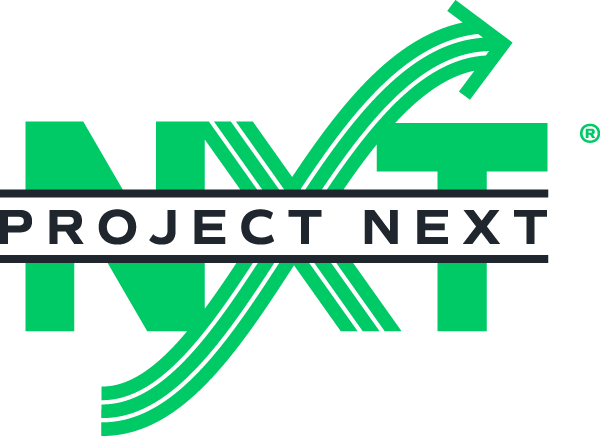January 20, 2025
As high school graduation approaches, one of the biggest questions students face is: “What’s next?” The traditional path has often been college, but in today’s world, many viable options exist, including vocational training or jumping straight into the workforce. Choosing the right path depends on your career goals, financial situation, and personal interests. If you’re unsure about your next step, this guide will explain the pros and cons of different post-graduation options and help you determine which is best for you. Option 1: Attending College Many students expect to attend a four-year college or university after high school. While this route offers long-term career benefits, it’s not for everyone. Pros of College: ✅ Higher Earning Potential – On average, college graduates earn more over their lifetime than those without a degree. According to the U.S. Bureau of Labor Statistics, the median weekly earnings for someone with a bachelor's degree is higher than those with only a high school diploma. ✅ More Career Opportunities – Some professions, such as medicine, law, and engineering, require a college degree. A degree can also make you more competitive in a variety of fields. ✅ Networking and Social Growth – College provides opportunities to build valuable connections with professors, classmates, and industry professionals. ✅ Broader Education – College allows you to explore different subjects, which is great if you’re undecided on a career. Cons of College: ❌ High Costs – Tuition, fees, and living expenses can add up quickly, leading many students into significant student loan debt. ❌ Time Commitment – A traditional bachelor’s degree takes four years (or more) to complete, delaying full-time workforce entry. ❌ Uncertain Job Market – A degree doesn’t always guarantee a job, and some graduates struggle to find work in their field. Best for: Students interested in fields that require a degree (e.g., law, healthcare, education, business). Those who enjoy academic learning and want a broader educational experience. Individuals prepared for the financial investment and long-term commitment. Option 2: Vocational Training (Trade Schools & Certifications) Vocational training, also called trade school or technical education, focuses on teaching hands-on skills for specific careers. Programs typically last from a few months to two years and can lead to high-paying, in-demand jobs. Pros of Vocational Training: ✅ Shorter Completion Time – Many programs take 6 months to 2 years, allowing students to start working (and earning) sooner. ✅ Lower Costs – Trade schools and certification programs are often significantly cheaper than a four-year college. ✅ High Demand Jobs – Many skilled trades, such as electricians, HVAC technicians, and welders, are in high demand with strong job security. ✅ Hands-On Learning – Trade schools focus on practical skills rather than general education courses. Cons of Vocational Training: ❌ Limited Career Flexibility – Some trades have specific job roles, meaning switching careers later may require additional training. ❌ Less Networking & Campus Experience – Unlike college, trade schools don’t provide the traditional “college experience” with clubs, dorms, and networking events. Best for: Students who prefer hands-on learning and technical work. Those looking for an affordable, fast-track route to a career. Individuals interested in plumbing, electrical work, cosmetology, automotive repair, and healthcare (e.g., medical assisting, dental hygiene). Option 3: Entering the Workforce Immediately Some students skip college or trade school and enter the workforce right after high school. Whether working full-time, starting a business, or joining an apprenticeship, there are many ways to gain experience and build a career without formal education. Pros of Entering the Workforce: ✅ Immediate Income – You start earning money immediately without accumulating student debt. ✅ On-the-Job Learning – Some employers provide training and advancement opportunities without requiring a degree. ✅ Entrepreneurial Opportunities – If you’re business-minded, you can start a company or develop skills through hands-on work experience. ✅ No Tuition Costs – You avoid the financial burden of college or trade school. Cons of Entering the Workforce: ❌ Lower Starting Salaries – Many entry-level jobs for high school graduates have lower wages than those requiring degrees or certifications. ❌ Limited Career Growth – Some industries have a glass ceiling without higher education or specialized training. ❌ Fewer Job Options – Some career paths are unavailable without a college degree or certification. Best for: Students who need or want to start earning money right away. Those who prefer to learn through real-world experience instead of formal education. Individuals interested in entrepreneurship or jobs that offer growth opportunities through on-the-job training. How to Choose the Best Path for You There’s no one-size-fits-all answer to what you should do after high school. Here are some key questions to ask yourself: 🔹 What are my career goals? College is likely necessary if your dream job requires a degree (doctor, engineer, lawyer). Vocational training might be best if you enjoy working with your hands or in a trade. If unsure, entering the workforce and gaining experience could help you decide. 🔹 What is my financial situation? If avoiding student debt is a priority, trade school or direct workforce entry may be wiser options. If you qualify for financial aid and scholarships, college may be more accessible. 🔹 How do I like to learn? Do you prefer academic settings and theoretical learning? College is a good fit. Do you enjoy hands-on training and practical skills? Consider trade school. Do you learn best by doing? Entering the workforce might be your best option. Final Thoughts: Your Future, Your Choice Choosing between college, trade school, and entering the workforce is a big decision—but it should be based on your goals, interests, and financial situation. Remember, there’s no “right” or “wrong” path—only one that aligns best with your skills, ambitions, and lifestyle. Some people thrive in college, while others succeed through vocational training or direct work experience. No matter your route, focus on continuous learning, gaining experience, and working toward a fulfilling career. Your future is in your hands—make the best choice for you! 🚀








